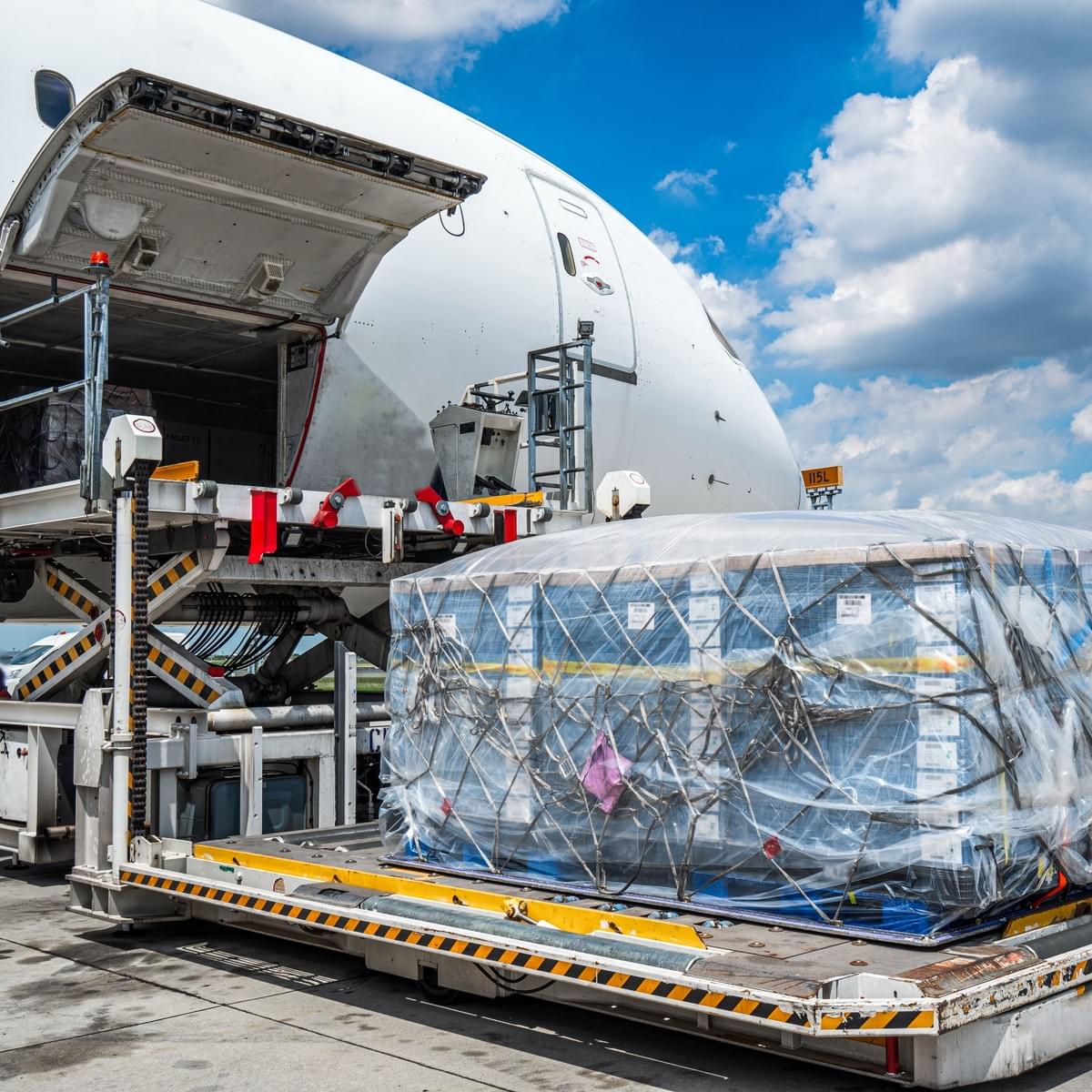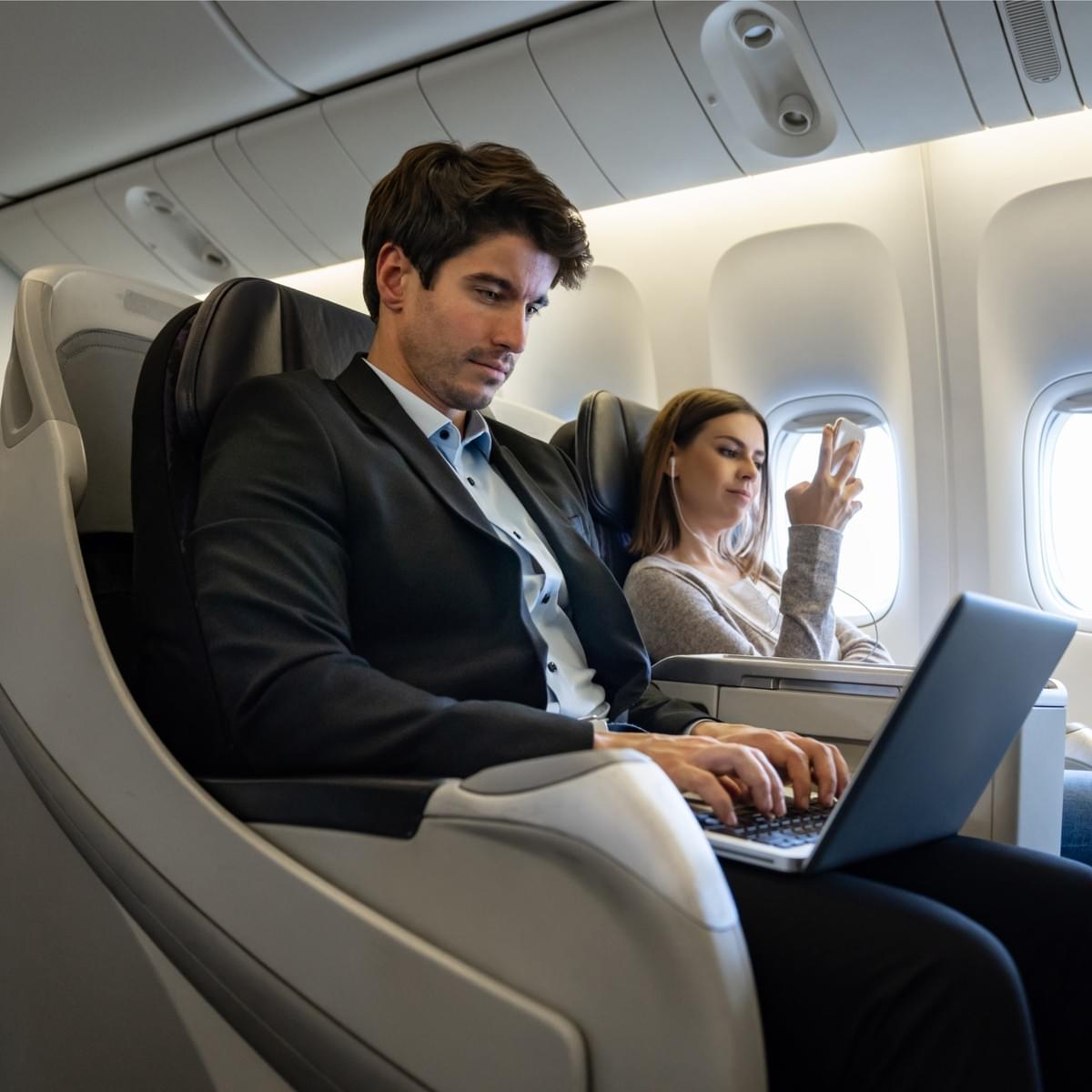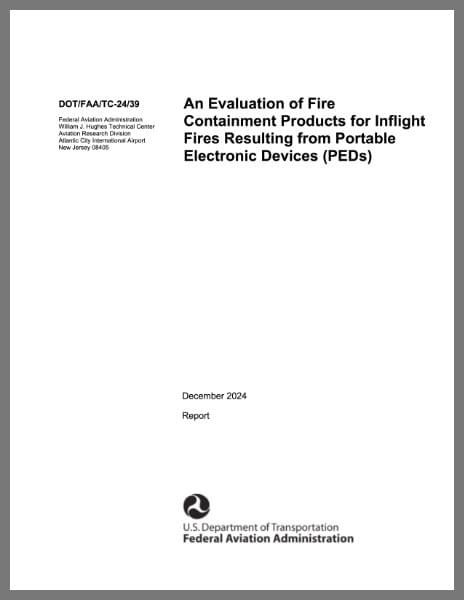
Aviation
Rechargeable devices, such as cell phones, laptops, tablets, and portable power banks, are all part of today's air travel experience. The Lithium FireGuard PG-100 is the only UL-approved single-stage lithium containment device designed for these high-energy batteries. During flight, the Pg100's patented technology will PROTECT passengers and crew members, COLLECT the device in runaway, and CONTAIN the device, ensuring safety for hours.

CARGO
There are significant and unique risks involved in cargo shipments of lithium batteries. Among these are that thousands of lithium batteries can be packaged together for shipping, creating the potential for a chain reaction in the event of a fire and/or explosion. This reaction was the case for UPS Airlines Flight 6, which crashed in 2010 near Dubai after a pallet containing more than 81,000 lithium batteries caught fire in the cargo hold during flight. Additional factors exacerbated the situation, and the plane crashed, killing its two pilots — the only crew on board. There were no additional casualties on the ground. Should a similar scenario occur in a densely populated area, the outcome would be even more tragic and catastrophic.

PASSENGER
According to FAA statistics incidents of Lithium Battery Fires on US flights have surged by 388% since 2015, now happening nearly twice a week. Just in 2024 alone there were a total of 84 incidents and these are just what have been reported. On average, passengers bring 4-5 lithium battery powered devices while traveling. This means there are thousands of devices onboard a flight at any given time. most commonly smartphones (82%), laptops (41%), wireless headphones (39%), and tablets (36%) — according to a 2024 report published by UL Standards & Engagement. Thirty One percent bring a portable charger or power bank with them, while 10% travel with an e-cigarette or vaping device. Despite the prevalence of lithium-ion battery powered devices, more than two in five (44%) Americans admit to knowing nothing about these batteries, and three in five consumers (60%) are unaware that lithium-ion batteries power many of the products they routinely use. These knowledge gaps have serious implications for aviation safety

CORPORATE
Protect you passengers, pilots, crew and your asset. Although there are less lithium batteries on a corporate aircraft they are still at great risk for lithium battery fire incidents. The PG 100 allows for the user to immediately scoop up the device prior to extinguishing and cooling which minimizes potential damage to the aircraft. It is the only device that has protection for the user and the passengers with its polycarbonate blast shield. Once encapsulated all of the toxic smoke is filtered through the particulate filters and the device can be fully submerged in water to prevent future propagation mitigating the need to down the aircraft and allowing for uninterrupted air travel.
Resources
Lithium Fire Guard
Aviation 1-Pager
FAA Fire Containment Product Evaluation
DOT/FAA/TC-24/39
Empowering Cabin Crew, Educating Passengers:
Roadmap for Strengthening Battery Safety on Flights
Copyright © 2025 Lithium Fire Guard







